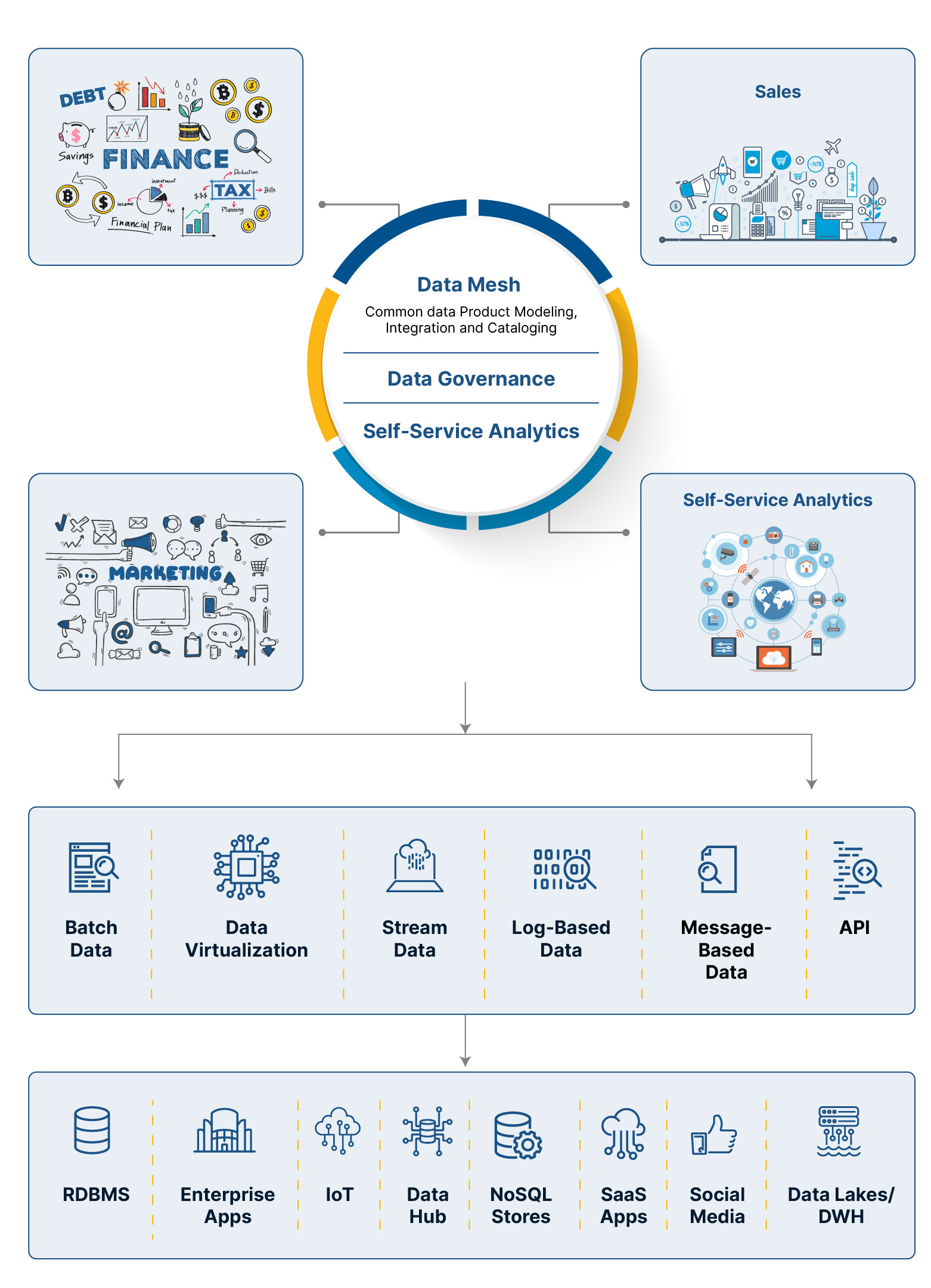Data mesh will be gaining popularity in the field of data engineering and data management. It's important to note that the popularity of concepts and trends in the tech industry can evolve rapidly, and I don't have access to real-time data.
Below are some insights into why data mesh will be gaining popularity around that time and why it may continue to do so:

Scalability: Data mesh was seen as a promising approach to address the challenges of scaling data infrastructure. As organizations generated and stored ever-increasing volumes of data, traditional centralized data architectures faced scalability issues. Data mesh proposed a decentralized approach that allowed for better scalability.
Data Ownership and Governance: Data mesh emphasized the idea of data ownership and governance distributed across different teams within an organization. This approach aimed to make data more accessible and manageable while ensuring data quality and compliance.
Cross-Functional Collaboration: Data mesh encouraged collaboration across different teams and domains within an organization. It promoted the idea of domain-oriented data teams responsible for their data products, which fostered cross-functional collaboration and reduced bottlenecks in data access.
Agility and Flexibility: In a rapidly changing business environment, data mesh offered the flexibility to adapt to evolving data needs. It allowed organizations to quickly onboard new data sources and build data products to support various business functions.
Improved Data Quality: With data ownership distributed to domain-specific teams, there was a greater emphasis on data quality and accountability. This could result in improved data quality and trustworthiness.
Technology Advancements: Advances in technology, such as cloud computing, containerization, and microservices architectures, provided the infrastructure needed to implement data mesh concepts effectively.
Thought Leadership and Advocacy: Prominent figures in the data industry and influential organizations began advocating for the data mesh approach, contributing to its rise in popularity.
It's possible that data mesh has continued to gain popularity since 2021, driven by ongoing advancements in data technology and the increasing recognition of the importance of effective data management and utilization in businesses. However, to understand its current popularity and relevance, it's advisable to consult the latest industry trends, articles, and discussions within the data community.
Let’s compare data mesh and traditional data warehouses.
Data mesh and data warehouses represent different approaches to managing and using data within an organization. Here are some key distinctions between the two:
Architecture:
Data Mesh: Data mesh promotes a decentralized architecture where data is owned and managed by domain-specific teams. These teams are responsible for the end-to-end lifecycle of their data products. Data is distributed across various data platforms or lakes.
Traditional Data Warehouses: Traditional data warehouses are centralized systems where data is collected, transformed, and stored in a single repository. Data warehousing typically follows a structured, schema-on-write approach.
Ownership and Governance:
Data Mesh: Data ownership and governance are distributed to domain-oriented teams. Each team is responsible for ensuring data quality, security, and compliance within its domain.
Traditional Data Warehouses: Data ownership and governance are typically centralized, with a dedicated team responsible for data management, governance, and access control.
Scalability:
Data Mesh: Data mesh is designed to be more scalable by distributing data management across multiple teams and platforms. It can handle larger volumes of data and diverse data sources effectively.
Traditional Data Warehouses: Traditional data warehouses may face scalability challenges as data volumes grow, often requiring significant hardware and infrastructure investments.
Flexibility and Agility:
Data Mesh: Data mesh is more adaptable to changing business needs and evolving data sources. It allows for the rapid integration of new data sources and the creation of domain-specific data products.
Traditional Data Warehouses: Traditional data warehouses can be less flexible and agile, requiring time-consuming ETL (Extract, Transform, Load) processes to accommodate changes in data sources or schema.
Cross-Functional Collaboration:
Data Mesh: Data mesh encourages cross-functional collaboration between data, domain, and engineering teams. It fosters a culture of collaboration and shared responsibility for data.
Traditional Data Warehouses: Traditional data warehouses may not emphasize cross-functional collaboration to the same extent, as data management is typically centralized.
Technology Stack:
Data Mesh: Data mesh can leverage a variety of technologies, including cloud data platforms, microservices, and containerization, to build a flexible and scalable data infrastructure.
Traditional Data Warehouses: Traditional data warehouses are often built using specialized data warehousing solutions and databases.
Data Quality and Trust:
Data Mesh: With distributed ownership, there is a focus on data quality within individual domains, potentially leading to improved data trustworthiness.
Traditional Data Warehouses: Data quality is also important in traditional data warehouses, but it may be managed centrally and require additional processes to ensure data quality.
Conclusion
It's important to note that both data mesh and data warehouses have their strengths and weaknesses, and the choice between them depends on an organization's specific needs, data maturity, and cultural considerations. Some organizations may adopt elements of both approaches to create a hybrid data architecture that best suits their requirements.













